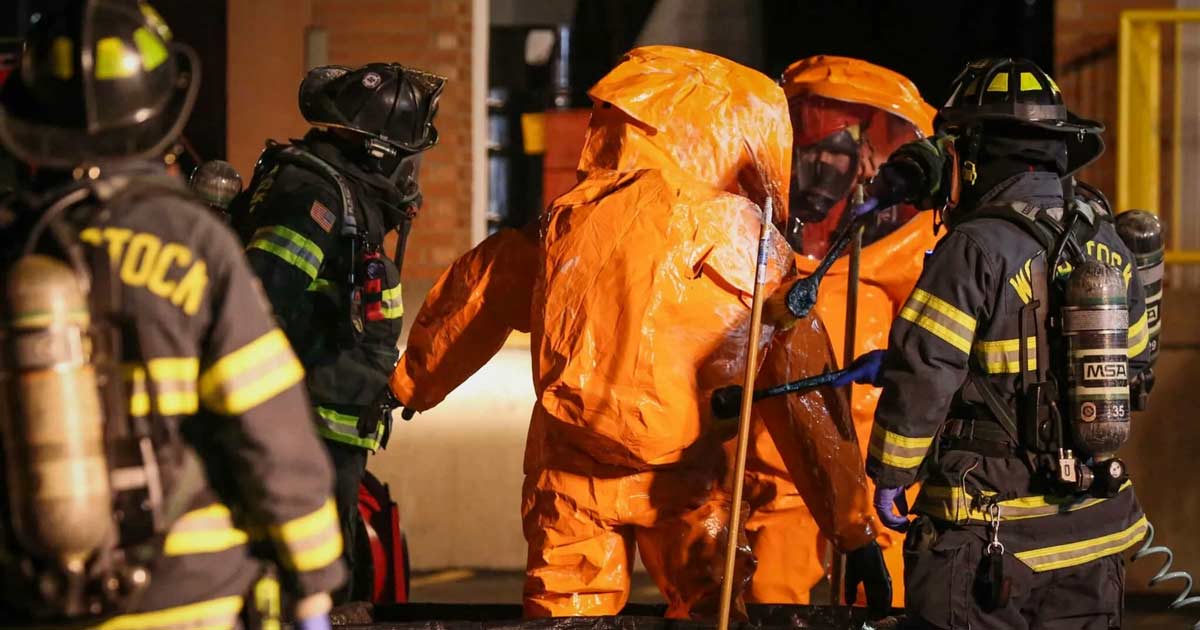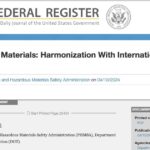Image Credit: Woodstock Fire/Rescue District
A regional hazmat team was activated in Illinois to respond to an anhydrous ammonia leak at a pickle manufacturing plant.
It took the hazmat team until after 2 a.m. May 30 to find and contain the leak at the Claussen Pickle Company in Woodstock, Ill. The initial alarm went out after 9 p.m. the previous night. More than 20 agencies sent resources to the scene through the Mutual Aid Box Alarm System, according to reporting by the Lake and McHenry County Scanner.
The plant’s workers were evacuated. There were no reported injuries to firefighters or employees.
Also Read: On May 11, 1976, an ammonia truck disaster killed 7 Houstonians and injured nearly 200
The paper did not report how much ammonia was released. Ammonia as a colorless gas. It blends with the moisture in the air to form a white cloud, but only does this in large amounts somewhere around 40,000 ppm. So seeing this cloud lets you know that you, at least, have a large amount of vapor (above IDLH).
Also Read: Small Illinois hazmat team stays ready
Here are four steps to help deal with an ammonia release.
ONE
Establish a research team to get weather conditions including wind speed and direction, establish PPE for recon and entry, fill out chemical worksheet for ammonia, get aerial map of area to identify exposures, and print plume overlay on map. The team needs to research the vessels and get information on valving, composition, volume, design, etc… It will also need to identify health issues including signs and symptoms.
TWO
Have the proper PPE and use it to its point of effectiveness. For ammonia, reconnaissance can be done in firefighter turnout gear and SCBA. Their objective is to identify the hot zone, perhaps 10% of the IDLH (about 30 ppm) and not move any further than that. The entry team needs to be in Level A suits.
THREE
Establish a decontamination area. Dry decon with fans may work, but metering has to be done on the entry personnel. If still contaminated, move through technical decon. Better is a full wet decon set up, especially if the team is going to the trouble to do a Level A entry.
FOUR
Use the research group to find incompatibilities, find things you may be able to use for plugging or patching (wood plugs, rubber patches, etc…). If you have an A or B chlorine kit, they may have parts you can use such as patches chains. If it can’t be patched, consider letting it vent. With ammonia gas at 0.60 it will rise and disseminate in the atmosphere. This is where research has to do their work. Constantly monitor weather to check where wind is blowing and identify exposures. One option is to use constant, unmanned monitoring downwind with a remote meter. It is also important to identify the volume of the tank and attempt to calculate how long the release will take. Make certain the path the ammonia is traveling will not come in contact with populated areas.
Original post – Copyright © 2023 HazmatNation.com. Externally linked references may hold their own independent copyright not assumed by HazmatNation











